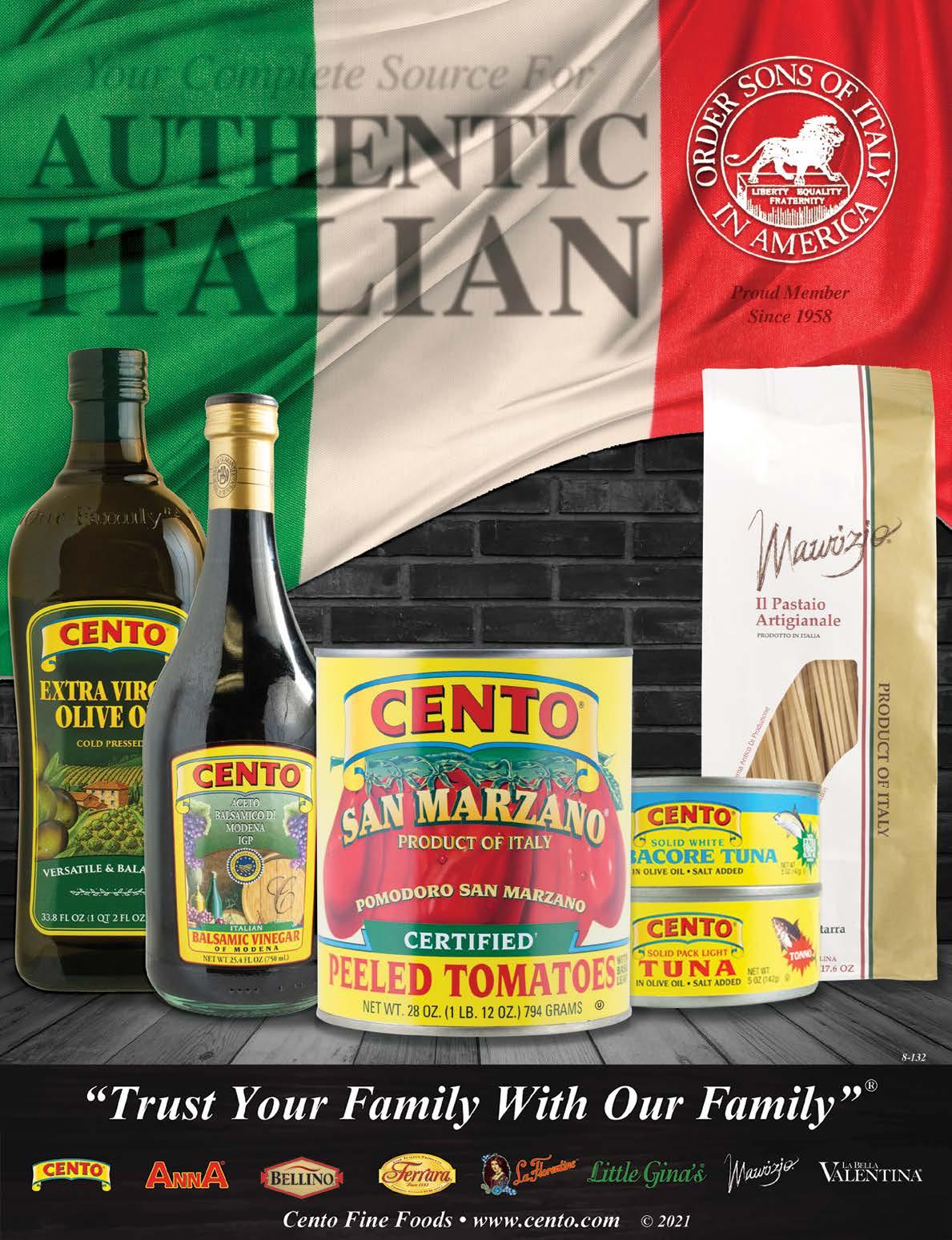


















Vincent Sarno and Vera Ferrara Girolami—both National Past Presidents of the Order Sons and Daughters of Italy in America (OSDIA)—were presented with the Dr. Vincenzo Sellaro Award at the Order’s virtual Plenary Session on Saturday, February 12, 2022. The award, which is traditionally presented at the Biennial Convention, was created in 1989 and is named for the Order’s founder. It recognizes OSDIA members who have distinguished themselves by exemplifying the ideals and principles of the Order. The Dr. Vincenzo Sellaro Award is the highest award presented to a member of OSDIA.
Vincent Sarno has been a member of the Giuseppe Garibaldi Lodge #1658 in Hammonton, New Jersey, for over 20 years and the Enrico Fermi Lodge # 2229 in Medford, New Jersey, for over 30 years. In 2005, he was elected to serve as the Order’s 30th National President. Following his presidency, he served as Sons of Italy Foundation (SIF) President for two terms and was named SIF President Emeritus.
In January, the Order Sons and Daughters of Italy in America (OSDIA) released new official organizational logos. The new logos reflect the name change that OSDIA underwent in August 2017 at the 55th Biennial Convention, when it began doing business as the “Order Sons and Daughters of Italy in America.”


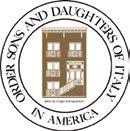
Originally, OSDIA was named Ordine Figli d’Italia—or “Order Children of Italy.” However, because the plural of children is masculine in the Italian language, this translated as Order Sons of Italy in America, the name that the organization carried until it was officially changed.
In addition to his supreme council offices, he successfully served as chairman of committees overseeing membership, fundraising, and education. He served as Education Chair for the committee that planned and conducted OSDIA’s first-ever National Youth Summit in Washington, D.C.
Vera Ferrara Girolami has been a member of the Modesto Lodge #2021 in California for over 35 years. In 2017, she was sworn in as the Order’s 36th National President, becoming the second woman in OSDIA history to serve in that position. During her term, the Order’s name changed from the Order Sons of Italy in America to the Order Sons and Daughters of Italy in America.
Prior to serving as National President, she served in many positions, including Local Lodge President for three terms and Grand Lodge of California Convention Chair for two years. She founded and, for 22 years, chaired the Central Valley OSDIA Foundation, a 501(c)(3) organization that raised more than $350,000 for communities and charities. In 2005, Vera became the first woman to be elected President of the Grand Lodge of California.
Now, logos bearing this name have been created and released for the Order Sons and Daughters of Italy in America in three versions: orange, black and white, and gold. Logos have also been released for the Sons of Italy Foundation—the philanthropic arm of OSDIA—and the Commission for Social Justice—the anti-defamation arm of OSDIA.
To obtain the logos in PNG file format, contact the National Office at nationaloffice@osia.org








On February 3, 2022, Sergio Mattarella was reelected to serve a second seven-year term as Italy’s President. The reelection occurred after the parties in Italy’s governing coalition failed to produce a successor after seven rounds of voting. President Mattarella, who is 80 years old, did not want to serve a second term—a stance that softened as appeals to him were being made, particularly by Prime Minister Mario Draghi.
Due to these entreaties and the present challenges facing Italy, Mattarella stated that he felt “a sense of responsibility” to the country. He added that “duty to the nation must prevail over my own personal choices.” Upon his agreement to remain in position, Mattarella was promptly voted in to serve a second term, receiving 759 votes of the 1,009 parliamentarians and regional representatives responsible for electing the president. At least 505 votes—a simple majority—are needed to elect a president.
“We still need to work together to strengthen Italy, beyond the current difficulties,” Mattarella said in his ac-
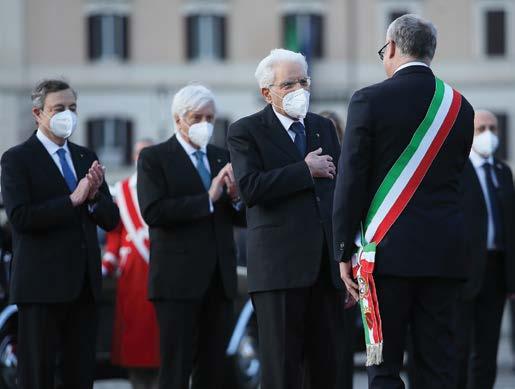
ceptance

www.treolive.com


L’Aquila, meaning “The Eagle,” serves as the capital of the Abruzzo region in central Italy. Formed by several pre-existing villages (99 of them, according to local tradition), the city was a project launched by Holy Roman Emperor and King of Sicily Frederick II for the purpose of fortification against the papacy. L’Aquila was completed by Frederick’s son, Conrad IV, in 1254.
The city is situated in a unique location, surrounded by the Apennine Mountains. The highest peak of the mountain range is the Gran Sasso d’Italia, which stands at nearly 10,000 feet and can be seen looking to the northeast of the city. Because it is surrounded by mountains, which block out humidity, L’Aquila maintains a particularly cool, dry climate.
Gran Sasso National Park, which was founded in 1991, is Italy’s largest national park and boasts extraordinary wildlife. Several mountains host ski resorts, making L’Aquila an ideal place for outdoor activities year-round— whether it involves hiking in the summer or skiing in the winter.
Because L’Aquila sits on an ancient lake bed that experiences constant seismic activity, the city is susceptible to earthquakes. The most recent earthquakes that affected L’Aquila are the 2016 Central Italy earthquake and the 2009 L’Aquila earthquake, which claimed 308 lives.
The highest point of L’Aquila itself is Forte Spagnolo, a massive Spanish fort built in 1534 that now houses the National Museum of Abruzzo. Another well-known landmark is the Basilica of San Bernardino, which was built in

1472 with a Renaissance façade and houses the body of the eponymous saint. The main cathedral in L’Aquila—The Cathedral of San Massimo (also known as L’Aquila Cathedral)—was built back in the 13th century, but was severely damaged by the 2009 L’Aquila earthquake after having been destroyed by an earthquake in 1703 and rebuilt.
INTERESTING FACT: Though the Fountain of the 99 Spouts is seven and a half centuries old, its water source remains unknown.

There are also two fountains of note: Fontana Luminosa (Luminous Fountain) and Fontana delle novantanove cannelle (Fountain of the 99 Spouts). Fontana Luminosa, built more recently in the 1930s, is a sculpture of two women holding up large jars. Fontana delle novantanove cannelle, however, was built in 1272, perhaps to represent the 99 villages that came together to form L’Aquila.
As any traveler will see, L’Aquila has a majestic combination of nature and history, much like the animal for which it is named.
Capital of: Abruzzo Region


Province: L’Aquila
Population: 70,967
U.S. Sister Cities: Washington, D.C.
Makes about 25 crocchette
¼ pounds russet potatoes (about 2 to 3)
2 bay leaves
1 tablespoon black peppercorns
2 heads garlic, halved horizontally 1 teaspoon kosher salt, plus more for seasoning 3 ounces thinly sliced Genoa salami, cut into 1/8-inch dice 2 ounces sharp provolone cheese, roughly chopped into 1/4-inch dice
1 large egg
¾ cup finely grated ParmigianoReggiano cheese
2 tablespoons potato starch ½ teaspoon granulated onion ½ teaspoon granulated garlic ½ teaspoon freshly ground black pepper
Neutral oil, such as vegetable, for deep-frying (about 6 cups)
• Place the potatoes in a large pot with the bay leaves, peppercorns, and garlic. Add water to cover and season with kosher salt (about ¼ cup for every 8 cups water). Bring the water to a simmer over high heat, then reduce the heat to keep at a low simmer and cook, uncovered, until you can pierce the potatoes with a fork, 30 or 40 minutes. If you boil them too vigorously, the skin might start to come off and the potatoes will get too starchy. Drain, discard the aromatics, and set the potatoes aside until cool enough to handle.
• Peel the potatoes (discard the skin) and pass them through a potato ricer or food mill over a large bowl. (If you don’t have either you can press the cooked potato through a fine-mesh sieve with the back of a spoon.) You should have about 2 packed cups of riced potatoes.

• Working in batches to avoid overcrowding, fry the crocchette until golden brown and crispy, 1½ to 2 minutes, stirring occasionally. Carefully remove with a slotted spoon and set on the paper towels to drain. Season with salt while still warm.

Serves 4 to 6
¾ cup (1½ sticks) unsalted butter
2½ cups thinly sliced yellow onions (about 2 medium)
1½ cups thinly sliced shallots (3 to 4 medium)
1 tablespoon plus 2 teaspoons kosher salt, plus more for the pasta water
¼ teaspoon ground white pepper
1 cup vegetable stock or unsalted chicken stock
1 cup crème fraiche
½ cup finely grated Parmigiano-Reggiano cheese

1 pound farfalle
• In a medium pot, melt 8 tablespoons (1 stick) of the butter over medium heat. Add the onions, shallots, salt, and white pepper and stir well to combine. Cook, stirring often, until the onions release their liquid and wilt, 10 to 12 minutes.
• Add the vodka, increase the heat to high, and continue to cook, stirring often, until the alcohol is evaporated, about 4 minutes. Add the stock and continue to cook, stirring often, until the onions are very translucent and soft and the liquid is fully evaporated, another 7 to 9 minutes.
• Carefully transfer the onion mixture to a blender along with the crème fraiche and parmesan. Open the steam vent in the blender lid and cover the opening with a towel to avoid hot splatter and blend on high until very smooth, about 3 minutes.
you
• Add the salami, provolone, egg, parmesan, potato starch, granulated onion, granulated garlic, the 1 teaspoon salt, and the pepper to the bowl and mix well with a large spoon until evenly incorporated. Using your hands, roll the mixture into 1½-inch spheres (about 2 tablespoons each) and arrange on a baking sheet for frying. (Uncooked, rolled crocchette can be kept in the refrigerator for up to 1 day before frying.)
• Line a baking sheet with paper towels. Pour 3 to 4 inches oil into a large heavy-bottomed pot or Dutch oven and heat to 350ºF over medium-high heat.
• In a large pot, bring 4 quarts water and ½ cup kosher salt to a boil over high heat. Add the farfalle and cook the fresh pasta until the ends are soft and the middle is just cooked through, about 1 minute 30 seconds; for dried, cook according to the package directions. Drain and return to the cooking pot. Add the pureed sauce from the blender and heat over medium-high until the sauce bubbles; it should thicken and coat the pasta in an even layer. Add the remaining 4 tablespoons butter and stir until melted and velvety.

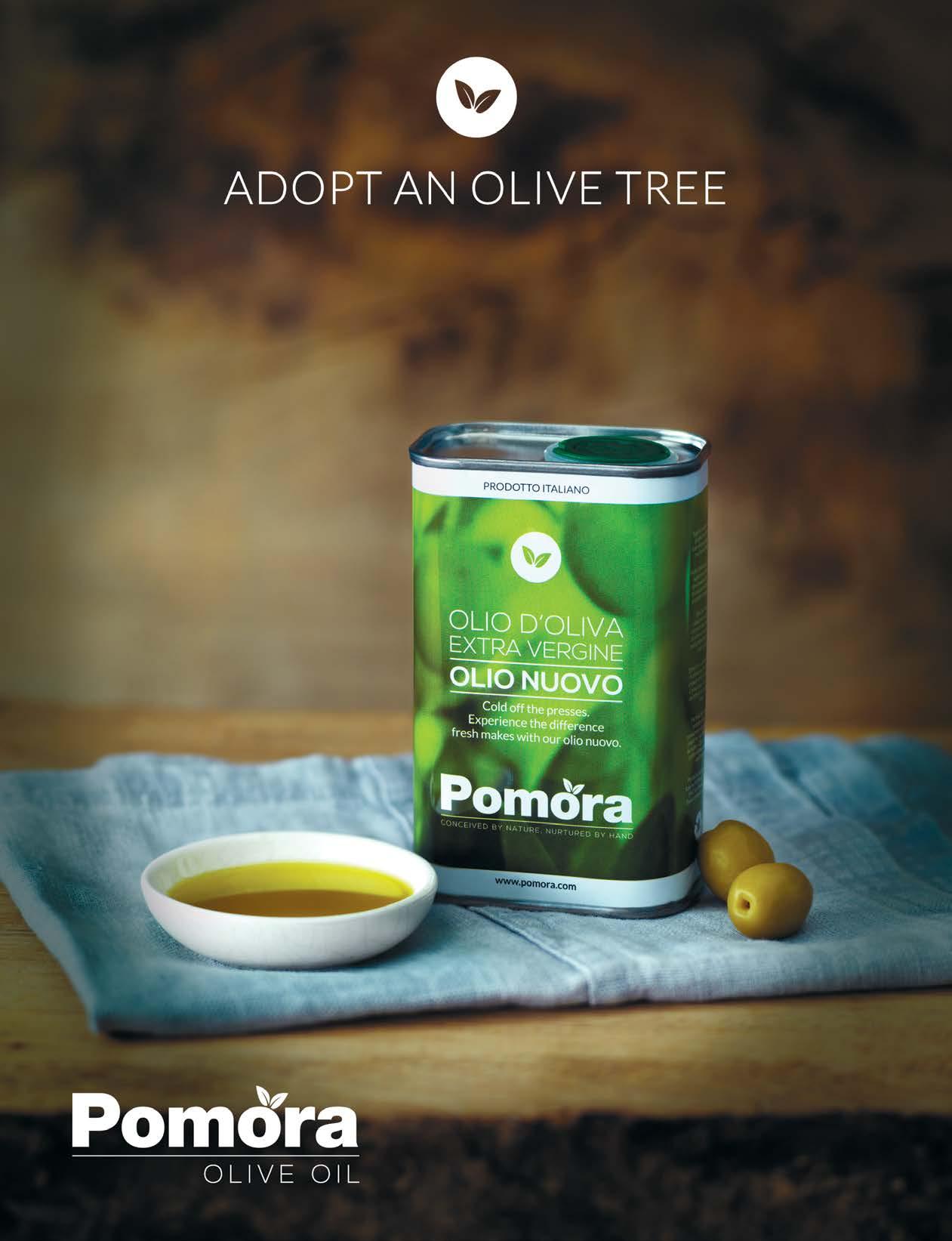


Marilia ed io saremmo andati in Italia nello stesso periodo e le avevo promesso che sarei andato a trovarla nell’isola di Ponza. Quando sono arrivato a Formia, sono stato informato che l’ultimo traghetto per Ponza era stato cancellato a causa del mare agitato. ***
È solo il primo giorno, e già sono in ritardo. Il traghetto attracca e Marilia è lì per incontrarmi. La bacio educatamente sulla guancia, ma noto una certa esitazione da parte sua. L’isola è piccola e si aspettava dei pettegolezzi.
Saliamo verso la casa di Marilia, situata in posizione ideale, con una vista eccezionale sul porto sottostante. Sua madre mi offre un bicchiere del loro spumante fatto in casa sia come benvenuto che come saluto. Ci godiamo poi un grande piatto di pesce pescato quella mattina stessa. Il pasto è favoloso e mi sento pronto per un po’ di riposo.
Marilia mi porta di sopra in una camera da letto decorata con motivi artistici. Siamo finalmente soli sul balcone della stanza, ad ammirare la vista delle barche e degli yacht colorati. Mi viene in mente la famosa scena del balcone di Romeo e Giulietta, ma questa è reale. ***
Il secondo giorno, ci dirigiamo al porto. Mentre usciamo dalla porta d’ingresso, Nonna Cristina, che è seduta lì, colpisce delicatamente Marilia sul sedere con uno scacciamosche.

Una volta fuori, chiedo: “Perchè ha fatto quel gesto?”
“Ha un problema con i miei pantaloncini”, mi dice Marilia.
“Io non ho assolutamente problemi con i tuoi pantaloncini”, mi dico.
La sera prendiamo la strada costiera verso il porto, sulla Via Panoramica. Ci fermiamo in un’ampia curva e ammiriamo una spettacolare spiaggia a forma di mezzaluna. Si chiama Chiaia di Luna. Sulla spiaggia, gli amanti sono seduti al chiaro di luna.
***
Il terzo giorno, trascorriamo insieme una serata romantica. Marilia è splendida con un top di seta di un blu acceso e pantaloni bianchi. Camminiamo fino all’estremità del porto, dove il faro si erge prepotente. Questo è il posto dell’isola preferito dagli amanti.
Dopo il nostro primo bacio appassionato, mi sorprendo a proclamare: “Questa è l’isola dell’amore.” Poi continuo. “Potremmo goderci la dolce vita insieme.”
Con un sorriso provocante, Marilia chiede: “Con lo zucchero o con il miele?”
“Con lo zucchero e il miele”, rispondo ricambiando il sorriso.
All’ombra del faro, ci baciamo e ci abbracciamo di nuovo, e realizzo che ho appena fatto la proposta a Marilia. Guardando nei suoi occhi espressivi, so che ha capito quello che stavo provando a dire. ***

Il quarto giorno, siamo seduti nel patio di notte e guardiamo i pescherecci partire uno per uno. Torneranno presto la mattina, ma è allora che partirò. Ci tocchiamo e sapere che ci separeremo è difficile, anche se i sorrisi tra di noi sono dolcissimi.
Serena Lonigro was born and raised in Napoli. She graduated from the University of Naples “L’Orientale” with a degree in Foreign Languages and Literatures and now works in marketing and news media.

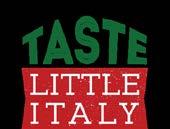

Marilia and I were both going to Italy at the same time, and I promised that I would visit her on the island of Ponza. When I arrived in Formia, I was informed that the last ferry to Ponza was canceled due to rough seas. ***

On the first day, I’m a day late. The ferry has docked, and Marilia is there to meet me. I politely kiss her on the cheek, but I notice some hesitance on her part. The island is small, and there will be gossip.
We ride up to Marilia’s ideally located home with an outstanding view of the port below. Her mom offers me a glass of their homemade spumante both as a welcome and as a salute. We then enjoy a large platter of fish caught that morning. The meal is fabulous, and now I’m ready for a little rest.
Marilia takes me upstairs to an artistically decorated bedroom. We’re finally alone on the room’s balcony, taking in the view of the colorful boats and yachts. I’m reminded of Romeo and Juliet’s famous balcony scene, but this scene is real. ***
On the second day, we’re heading down to the port. As we’re exiting the front door, Nonna Cristina, who is sitting there, gently swats Marilia on the butt with a fly swatter.
Once we’re outside, I ask, “What was that for?”
“She has a problem with my wearing shorts,” Marilia tells me.
“I definitely have no problem with the shorts,” I say to myself.
That evening, we take the scenic way to the port on the Via Panoramica. We stop at a wide curve and marvel at a spectacular crescent-shaped beach. It is called Chiaia di Luna. On the beach, lovers are sitting in the moonlight. ***
On the third day, we spend a romantic evening together. Marilia is stunning in a bright-blue silk top and white slacks. We walk to the far end of the port, where the lighthouse stands prominently. This is the favorite spot on the island for lovers.
After our first passionate kiss, I surprise myself when I proclaim, “This is the Island of Love.” Then I continue. “We could enjoy la dolce vita together.”
With a flirtatious smile, Marilia asks, “With sugar or honey?”
“With sugar and honey,” I answer as I smile back.

In the shadow of the lighthouse, we again kiss and embrace, and I realize that I have just proposed to Marilia. Looking into her expressive eyes, I know that she understood what I was trying to say.
***
On the fourth day, we’re sitting on the patio at night and watching the fishing boats leave one by one. They will be returning early in the morning, but it is then that I’ll be leaving. We touch, and knowing that we will part is hard even though the smiles between us are sweet.
Tony and Marilia recently celebrated their 53rd Anniversary. After 55 years as a public school teacher, Tony enjoys sharing his life’s experiences with the grandkids.
Maria Paparella grew up an only child in a big Italian family. Her parents were unable to have more children, and while her large extended family filled any silence, her parents pursued adoption. While Maria was in kindergarten, they were matched with a girl the same age as she—a girl that Maria began referring to as her “perfect sister.” After all, they had a lot in common with each other—even their birthdays were just days apart. But, much to Maria’s disappointment, the adoption didn’t go through.
As the years passed, Maria tracked her ‘almost’ sister through the foster care system to see if she’d been adopted by another family. During Maria’s sophomore year of high school, as she

started looking at colleges, she began to realize just how strong of a support system she had surrounding her—from her parents to her friends to her big, extended Italian family. This made her wonder: What about my ‘almost’ sister? What would happen to her? What kind of support system would she have?

That’s when she learned about a process called “easing out of foster care.” She learned that as foster children mature into adults, they are sent into the world without much of a support system at all—and certainly not to the degree that Maria had.
“The harsh reality of that really struck me,” Maria said. “I knew there was something I needed to do—and wanted to do—about that.”
Maria with her mother, Jacquelyn, and grandfather, Vincent, who both helped run Chez-Del and supported Maria in launching Chair-ity.So Maria contacted Summit County Children Services in Akron, Ohio, her hometown. She asked questions about the easing-out process, homing in on one question in particular: What is the greatest need for individuals easing out of the foster care system?
The answer surprised her: It was furniture.
When teenagers eased out of the foster care system, they moved into unfurnished apartments of their own. With minimal financial resources, they experienced great difficulty in purchasing furniture to fill the empty rooms of their new dwelling.



Upon learning this, Maria began reaching out to her family and friends, collecting enough second-hand furniture and financial funding within the first few months that she was able to furnish seven apartments. The recipients, who were referred to Maria by the county, included a teenage girl who, since having been released by her foster
family at age 18, was living in an apartment that contained nothing more than an air mattress.
On January 31, 2015, that apartment transformed into a home.
Maria arrived with a new mattress, box spring, and bed frame along with a bedroom dresser, dining set, sofa, and various other furnishings. It was Chair-ity’s very first delivery. The next two came later that same day.
Some particularly special help came from Maria’s family, the very support system that she’d come to recognize and fully appreciate. Her family owned a furniture store— Chez-Del Home Furnishings & Interior Design—and offered her initiative some much-needed warehouse space to store furniture as well as a delivery truck for moving it.
The store itself went back three generations, back to her mother’s paternal grandparents, Angela Percoco and Joseph DelMedico. Both were born in Bari, but they didn’t meet until Joseph arrived in Akron, Ohio, in 1917 and boarded with Angela’s family, who had immigrated ten years earlier. After Joseph boarded with the family, Angela’s father arranged for Joseph to marry his daughter—only, the daughter he’d arranged for Joseph to marry was Angela’s older sister. But Joseph and Angela were already deeply in love, and so they eloped, getting married in secret and returning to Akron afterward.
It was Angela who proved to have a keen eye for design, and with Joseph’s help, she opened Chez-Del. Not only was Angela ahead of her time—she accomplished this despite never finishing grade school. She and Joseph then passed the business on to their son, Vincent, who in turn passed it on to his children, including Maria’s mother. And now here was Maria, launching a furniture endeavor of her own in Chair-ity.

With the birth of Chair-ity, Maria was introduced to an attorney whose pro-bono assistance helped her, at the young age of 16, establish Chair-ity as a 501(c)(3). Through the remainder of high school and her four years at Kenyon College in Gambier, Ohio, Maria continued pushing Chair-ity’s mission forward. By the time she graduated college, Chair-ity had furnished 108 apartments.
During the spring of her college graduation, Maria was offered and accepted a job that fittingly focused on policy related to teenagers easing out of foster care. Her new home would be Washington, D.C.
Then the pandemic struck.
Suddenly, the job she’d accepted was no longer there, and the city where she’d planned to move was no longer her future home. So Maria returned to something familiar: Chair-ity. She began fundraising—making valuable contacts and gaining grant-writing experience. Despite the uncertain times, Maria managed to raise enough funding that Chair-ity was no longer her volunteer project—it
became her full-time job. Chair-ity, which had existed as a completely volunteer-based organization, now has one paid employee: the woman who started it as a sophomore in high school.
Through the pandemic, Chair-ity continued to grow, serving more teenagers throughout the foster-care community beyond Summit County. Since its very first delivery on January 31, 2015, Chair-ity has furnished more than 275 apartments and served more than 375 people. Many of those apartments are for two: a mother and her baby. Because teenage pregnancy is common among young women in the foster care system—eight in ten become pregnant before the age of 21. One thing that Chair-ity focuses on is helping babies stay with their mothers.
“One of the things we do is not only furnish the apartment for the young adults,” Maria explained, “but if they have any children of their own, we’re able to provide a bed or crib for the child as well.” In providing for the children, Chair-ity hopes to decrease the chances of mothers and children being separated from each other.
This caring spirit and positive outlook have brought Maria closer to others in the nonprofit community. In her hometown of Akron, it’s a kinship of which she’s becoming more and more a part.
“The nonprofit community is something very special,” Maria said. “Everyone that’s a part of it is looking to better the communities that we’re in.”
This very community in her hometown of Akron would never have become such an important part of Maria’s life had the pandemic not struck, had her post-college job not been rescinded, had she no place to turn—no home or support system to go back to. Yet there it was, the very thing that had already helped so many turn their empty apartments into furnished homes. The very thing that had served as a support system for individuals who did not have one.
Now, six years after she laid the foundation for an organization that helps teenagers ease out of foster care, Maria has come to find that Chair-ity is much more than a house she built. It’s now the place she calls home.


https://www.chair-ity.org/
If you would like to support Chair-ity, visit their website to make a financial donation or to contact them regarding furniture donations or volunteering.


Are you a member of the Order Sons and Daughters of Italy in America? If so, be sure to log into the Members Only section of the Order’s website: www.osia.org. When you do so, you will be able to access several benefits that are only for members.


Digital issues of the magazine going back to 2003. The most widely read magazine in the U.S. for people of Italian heritage, Italian America is distributed quarterly to OSDIA members and includes feature stories, profiles, recipes, book reviews, stories in Italian, and much more.
A range of Member Benefits that include discounts on Italian dual-citizenship, genealogy research, travel, healthcare, specialty items, and other services. OSDIA partners with over 25 companies to offer discounts and special offers for a variety of industries.

OSDIA members across the country can connect with each other by logging into their Member Accounts on www.osia.org and viewing Member Profiles. This allows members to network and share pertinent information, such as travel advice, genealogy, and book/movie/recipe recommendations. Filling out a Member Profile is completely voluntary, and the profiles can be viewed only by other OSDIA Members and only through the Members Only section.
1. Go to www.osia.org
2. Click on the “Member Login” button at the top of the webpage.
The Order Sons and Daughters of Italy in America offers its members a range of special discounts on Italian products, genealogy research, travel, healthcare, specialty items, and other services.

To view your Member Benefits, log on to www.osia.org and click on “Member Benefits” listed on the left.
If you are a Lodge Member and do not have a Username/Password, please contact your Grand Lodge or Subordinate Lodge about setting one up.
If you are an At-Large Member and do not have a Username/Password, please contact NationalOffice@osia.org about setting one up.
3. Enter your User Name and Password.
If you are a Lodge Member and do not have your Username/Password, please contact your Grand Lodge or Subordinate Lodge to obtain it.
When I picked up the phone and heard my father’s voice, I knew it was bad news. My father never called anyone. It just wasn’t his style. He never answered the phone, either.
And his call did deliver bad news. Gramp had died. I dropped the receiver and sobbed as I hadn’t since I was a child.
Gramp—my maternal grandfather—was a natural storyteller. His stories were always entertaining and told in that wonderful mix of Italian and accented English. He butchered both languages to get a laugh or an eye roll out of his grandkids. Gramp always tossed in a few words none of us knew existed before, probably because he made them up on the spot.

He especially liked telling stories about winters when he was in the Alpine Army during World War I. He somehow remembered the days—and how much—it snowed, often correcting his memory as he’d go. Gramp strove for accuracy in his stories.
“There was’a six’a inch’a snow on’a the first’a June … no, the second’a June,” he’d say in that accent I always loved. “An’ it was’a eight inch.”
We never believed he actually remembered such details, but we didn’t care. He’d follow up this weather report by telling us how hungry those soldiers were, all of them losing weight high up there in the Alps. “The belt, it goes’a two times around’a the waist.”
But his favorite story was how he’d captured a German soldier.
“I tol’ him, ‘Putta you hands up or I’m a’gonna shoot you,’” he’d recall as he pointed an imaginary rifle. The German wisely surrendered.
That story always struck me as a little off. Why was the German behind Italian lines? And what was Gramp, who had been in a medical division, doing with a rifle? But we never questioned him. We didn’t really care about facts. He was telling a story and he was well known for embellishing them.
At the end of a story, he’d always look at us and ask, “Whaddya dinga ‘bout that, huh?”
Whenever I visited home, I’d stop by to see Gramp and Grandma first. Being Italians, we hugged without
reservation. Gramp smoked cigarettes for many years, only quitting cold turkey when a doctor ordered him to. When we hugged, I could smell the mix of wine—which he made in his basement—and cigarettes that enveloped him. I miss that smell to this day. After hugging, we’d sit down for a glass of wine and whatever Grandma had whipped up in the kitchen.
I mourned his passing for days until my mother told me something that made his death easier to accept.
In their final years, Gramp and Grandma had hired a woman to help. On the morning of his last day, the woman entered the bedroom to ask Gramp what he wanted for breakfast and found him going through his clothes closet.
“Mr. Martori, what are you doing?”
“I’m a’lookin’ for my suit,” he replied.
“Why do you want your suit?”

“I’m a’gonna see my father today.”
Although I’m sure this struck her as odd, she let it slide and asked him what he wanted for breakfast.
“I wanna spaghetti,” he said.
She probably figured, he’s 85 years old; if he wants spaghetti for breakfast, he gets spaghetti for breakfast.
He entered the kitchen dressed in his suit and sat down to the plate of spaghetti that was set out for him. He ate, stood up, and had a massive heart attack. Dead before he hit the floor, I was told. Somehow, he knew what was coming. He wanted his suit because he was going to see his father—whether he meant his real father or God, who knows?—and if he was going to die, he was going to die with his favorite meal in his belly.
Joseph Sorrentino is a writer, photographer, and playwright. His book, Stinky Island Tales: Some Stories From An Italian-American Childhood, is available on Amazon. It contains four stories and 26 drawings and is in English and Spanish.
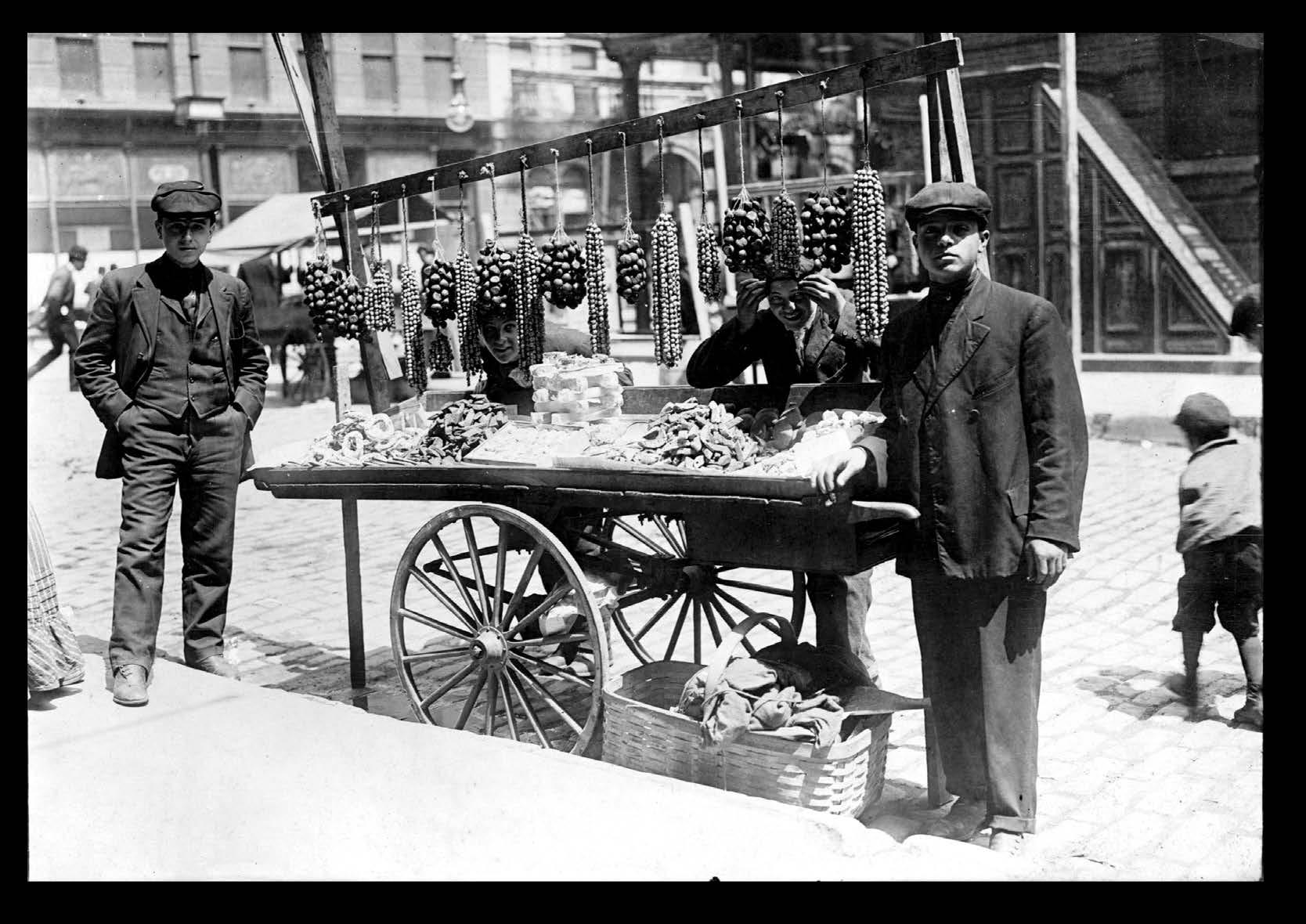



 BY CAROL ANN LINDER
BY CAROL ANN LINDER
By the 1930s, the Riccio family found themselves spiraling deeper into debt. They owed so much to so many in the small town of Rye, New York, including a good deal to the peddler who would push his cart up Maple Avenue selling fruits, vegetables, and various household items. Grace and her husband, Antonio, worried about their obligations day and night. The Great Depression had affected most of the country, causing Antonio’s work as a carpenter to slow significantly. Grace felt she needed to do something to make up for the loss of income.
She did not have a formal education, but Grace was a practical woman. As the mother of seven, she often had to rely on her ingenuity. Indeed, she knew a great deal about housekeeping, some of which she brought from the old country. She was also very enterprising. She knew how to make a solution called “Javelle Water” by taking a small amount of sodium hypochlorite and mixing it with water. She used this recipe to make her own bleach. Hanging on her clothesline were the whitest shirts in the neighborhood.
While doing the wash one day, she was inspired by a perfectly brilliant idea. She decided to negotiate an arrangement with the peddler. She would make up a batch of Javelle Water and bottle it. She convinced the peddler to sell it from his wagon. They would split the proceeds, and thus, as the bottles sold, she could whittle down the amount her family owed to the peddler. For each bottle sold, some pennies went to the peddler while a few went back to Grace to buy more ingredients.
Above left: The White Lily label that was affixed to each bottle.

Javelle Water, it turned out, was just what folks in Rye needed to bleach their towels and undergarments. Grace was marveling at how well Javelle Water worked because her sheets came out of the wash “looking as white as a lily,” as she once told a neighbor. And there it was, a name for her business. Grace called her concoction “The White Lily.”

The formula had many practical uses. Not only did it bleach laundry, but it was also a great disinfectant for kitchens and baths. And because it contained chlorine, it was an ideal purifier for swimming pools as well.
Antonio knew which homes on the more affluent side of town had pools in their backyards. The pools needed not just quarts of chlorine, but gallons of it. And so, Grace’s business began to grow and prosper. Instead of just quart bottles, they were selling it by the gallon. The price was 25 cents per gallon (22 cents, plus a three-cent bottle deposit), so the crate of four gallons sold for $1.00.
Soon, they had enough money to buy a truck. Prior to that, the Riccios never even owned an automobile. The first thing they did was to paint the name in gold lettering on the side of the black delivery truck: “The White Lily - The Ideal Washing Fluid,” advertising the name and address of the business.

It soon became a family enterprise, and everyone pitched in. It involved buying the chemicals, mixing the ingredients in large tanks, repurposing the wooden barrels that Antonio used for making wine, fitting the barrels with liners, tapping them from a spout near the bottom, filling the glass jugs, and pasting “The White Lily” labels on the jugs.
The operation was conducted entirely from the basement of their home. They arranged the bottles in wooden crates, hoisted the crates through the basement window, and drove the loaded truck around Rye, delivering the orders. Now, it was much larger than the peddler selling the product off his wagon. Eventually, Grace’s entrepreneurial idea got the family out of debt and into a successful business venture that would thrive for the next 30 years.
This was an incredible step up from her roots. Grace, as well as Antonio, had both come from the town of Castelfranco in Miscano, located in the mountainous region of Campania. Grace was born Maria Grazia Riccio … Riccio being her maiden name as well as that of her husband.
In 1905, she awaited the birth of her first child while also anxiously anticipating a letter from Antonio telling her to come to America. A year later, Grazia and her baby daughter sailed across the Atlantic to join Antonio.
Arnold driving The White Lily bleach truck.Grazia, who became known as Grace in America, was short in stature, ample in girth, and abundant in heart. She had a love that extended beyond her family to all her neighbors. Their front door was always unlocked “in case someone needs help in the middle of the night,” she’d say. During an epidemic, she wet-nursed the tiny baby of a neighboring family when its mother was stricken with the flu. And it was her ingenuity that got the family out of debt when it mattered most.
Like many Italian immigrants, the Riccios worked hard to make a good life for their children. In addition to being an expert carpenter, Antonio learned to cut hair and opened a barber shop in the house he’d built with his own hands. Grace planted a garden and grew a variety of vegetables to keep her family nourished and healthy. Money was always tight, but they were able to make ends meet.
The 1920s had been a relatively stable time—until suddenly, it wasn’t. By the end of the decade, the Great Depression had changed their lives. Their eldest son, Leonard, graduated from Middlebury College in Vermont in June 1929 just before the American economy plunged into financial ruin. And yet, for 13 years—from 1925 to 1938—the family had one or more of their four sons attending Middlebury. Their intention was to send all of their sons to college.
The bleach venture provided the perfect summer jobs for all the boys, and they took turns driving the truck and making deliveries. Sons Victor and Albert pitched in to help with the management of the business. The youngest daughter, Ida, drove the truck, too, but had to lay a pillow behind her to help her reach the foot pedals. Atop the pillow is where Panda, the family dog, rode along ready to deter any thief who might try to steal the truck or its contents.
Gradually, Grace let the rest of the family run The White Lily. Antonio took over the business operations. Victor’s name was added to the letterhead stationery as “Sales Manager.” Albert joined the business full time after graduation. Antonio appropriated ownership, adding “and son” to the logo, so that by 1940, the label read: “The White Lily” Manufactured by A. Riccio and Son, Rye, N.Y.
While it was Grace’s business, Antonio took the credit because it wasn’t seemly at that time for a woman to run a company. Yet it was Grace’s resourcefulness that kept the family afloat during the worst of times.
LEFT: The woman behind White Lily, Grace Riccio, tends to her garden.
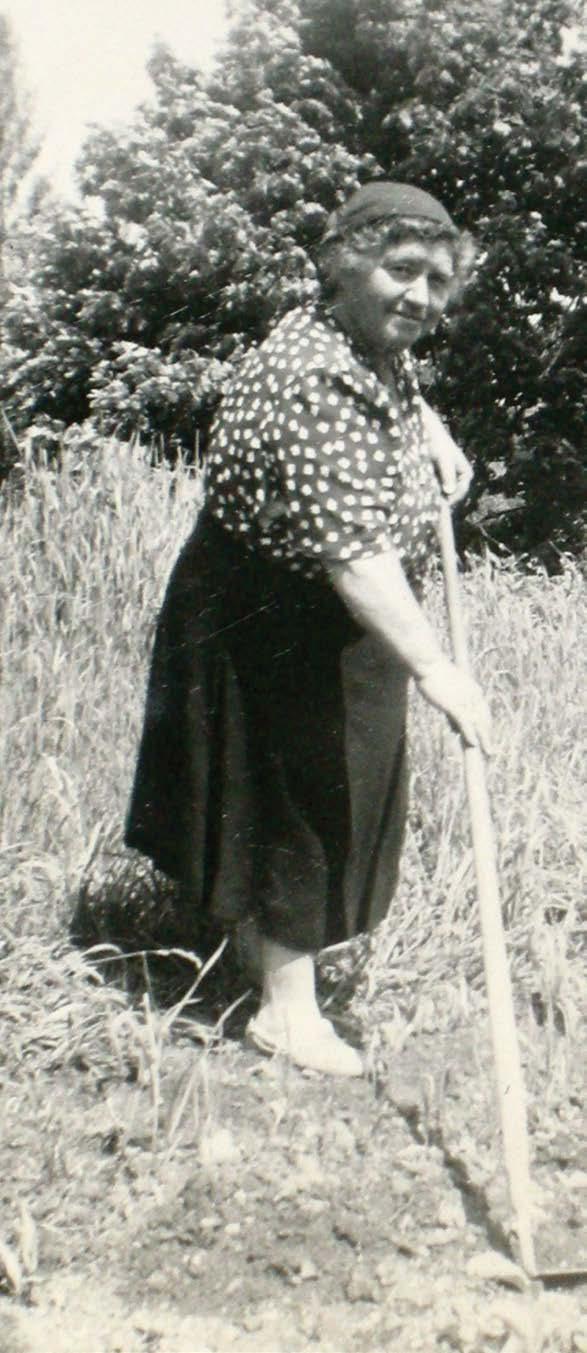

The White Lily continued to grow and eventually became the family’s primary source of income. It had been successful enough to make them financially stable. They were resting easy for a while … a very short while. Their contentment lasted less than a decade. Soon their son, grandson, and nephews were enlisting to fight in World War II.

Then, in the summer of 1945, just as the war was about to end and peace put the world right again, the Riccios’ good fortune was about to draw to a close. Their “boys” would soon be returning home, safe and sound, but the prognosis on the home front was not as good. Grace knew that all was not well with her health.
The pain in her abdomen was so unbearable that she could no longer endure the suffering. She entered the hospital for surgery, and a week later she was gone. On August 6, 1945, Grace Riccio succumbed to the cancer that had been surreptitiously ravaging her body.
The loss dealt a devastating blow to the family’s little corner of the world, so much so that they barely noticed that the United States had dropped an atomic bomb on Hiroshima that same day. The heart and soul of the Riccio family was gone, and they mourned the loss of their beloved mom.
The business endured, but Antonio’s heart was no longer in it. Twenty years passed, and the mighty little
Ida with Panda the family dog. Her father, Antonio, is in the White Lily truck.

family enterprise couldn’t keep pace with the modern competition of the postwar boom.
But that didn’t change what Grace had managed to accomplish, getting the family out of debt and onto solid financial footing. And in the end, her family continued to gather at the “old homestead” to tell wonderful, animated stories about her—about her goodness, about her humor, about her compassion. And especially about her ingenuity that saved the family.
Carol Ann (Riccio) Linder (ca.linder22@gmail.com) is the granddaughter of Grace and Antonio Riccio. She has been compiling stories of her family’s history—their emigration from Italy and their lives in America. She lives with her husband Ken in Arlington, Virginia.
 A bird’s eye view of the bleach operations in back of the house.
A bird’s eye view of the bleach operations in back of the house.
With her patented flair for descriptive language, author Adriana Trigiani delivers an emotional tale that will touch the heart of all readers. The story will pull you in from the start and not let go until you’ve read its final words.
The Good Left Undone opens in Viareggio, a seaside Tuscan town whose allure deters its inhabitants from ever leaving. For Domenica Cabrelli, however, it is not her choice—she must leave. Her departure coincides with the onset of World War II, which complicates any possible return to the town she loves. Her travels take her all the way to Scotland, where she discovers a thriving enclave of Italian immigrants.
“Savattini nodded.There was no way out of this one. His motherland had shown loyalty to the wrong side, and now he would personally pay the marker.”
But with Fascist Italy’s alliance to Germany and formation of the Axis Powers, Scotland’s Italian population finds themselves on the wrong side, living in a country that is at war with their homeland—much as Italian immigrants in the United States experienced. In this, Trigiani brings an historical perspective on what befalls the Italians of Scotland—which in some ways mirrors that of the Italians on the West Coast of the United States and all Italians across the country who were suddenly labeled “enemy aliens.”
Throughout the novel, Trigiani builds strong female characters—from Netta to Domenica, Matelda to Anina—who represent several generations of a single family spanning from 1920s to the present. It is the will of these characters—and a focus on the importance of returning to one’s roots and passing on family history—that carries this epic until the story reaches a poignant crescendo that produces perhaps the most emotionally gripping pages that Trigiani has ever written.

They arrived in Florence ten days before Italy declared a national lockdown—then they couldn’t leave. This is what author Philip Piccigallo and his wife, Rose, along with their Wire Fox Terrier—aptly named Dante—faced upon arriving for what was to be their dream trip: four months in Florence. With an apartment overlooking the Arno River and located just steps from Ponte Vecchio, they quickly saw their lifelong dream disappear into COVID reality.

Piccigallo will take you on a walk through Florence amidst the pandemic, recounting the experience of what it was like in Italy and the emotional rollercoaster that came with being in a beautiful but foreign city during multiple lockdowns. The initial confusion that led to strict measures. The melancholy of empty markets. The luxury items that suddenly became worthless. He will present a perspective of what life was like in a desolate city that thrives off tourism.
The Uffizi Gallery was originally built for Cosimo I de’ Medici to serve as an office building for Florentine magistrates.
Of course, not all will be lost, as there is clearly much beauty to be had in experiencing Florence absent its customary crowds. You will learn about the finer things in life—history, art, food, wine, etc.—that only a city such as Florence can offer. A frequent visitor of the city, Piccigallo offers educational lessons in a variety of areas, including many of its customs. He’ll also introduce you to several Florentines that he’s befriended over many years.
And while being in a city as beautiful as Florence amidst a pandemic may be bittersweet, Piccigallo will make one thing clear: whatever the situation, it’s always better with man’s best friend by your side (and a loving wife, too!).
Visit www.osia.org to find a selection of recent books written by OSDIA members!




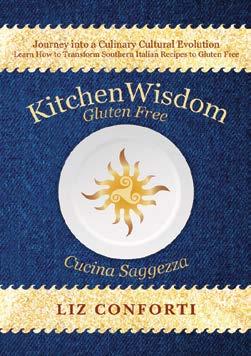





 An empty Piazza San Pietro sits before the Vatican.
Etruscan tombs sit undisturbed in Orvieto.
BY TIFFANY EASTHAM
An empty Piazza San Pietro sits before the Vatican.
Etruscan tombs sit undisturbed in Orvieto.
BY TIFFANY EASTHAM
As I watched other countries around the world close their borders in 2020, I mourned the cancellations of multiple trips abroad that my husband and I had planned for that year. It’s no surprise that the COVID-19 pandemic has drastically changed how we live, work, and travel.
But as the world emerged from its first pandemic winter, so did the news that Europe could be reopening to tourism in the coming spring. The thought of a summer trip abroad suddenly seemed possible, and I knew without a doubt where I would return, if given the chance. Needless to say, we anxiously booked our flights to Rome for July 2021, and no other destination could have felt as right as this one.
The morning of our flight, we checked in with relative ease after our COVID tests and other required documents were verified by the airline agents. As we boarded the plane, I had the biggest smile under my mask just listening to the flight attendants chatter in German—a foreign language!—to one another. With that, we toasted our glasses of champagne as the plane rumbled down the runway, and we were off to Europe for the first time in nearly two years.
Seventeen hours later, my jetlagged body was met with the smell of espressos and fast-talking, fast-walking Italians as we made our way through Rome’s airport. I held brief,

friendly conversations in Italian with our driver while gazing out the backseat window and admiring the old walls of Vatican City coming into view. Once we turned onto a narrow cobblestone street, our driver sweetly pointed out several restaurants and a gelateria that we should try, all while effortlessly dodging Vespas and pedestrians. I was finally back in a place that I loved and knew so well.
We emerged from our bed and breakfast the next morning to a nearly empty street – a calmness not normally felt in Italy’s bustling capital city. We meandered just several minutes down and around a corner as the sound of splashing water greeted our ears. Piazza Navona’s famous fountains were the first things I heard that late morning as we walked through Rome. A popular city square that is normally filled to the brim with tourists, Piazza Navona, instead, sat idle with only a flock of pigeons, a few curious individuals, and the simple sound of running water.
Rome wasn’t completely deserted, but the volume of tourists was substantially less than in past years. We were lucky enough to have been awarded two of just a handful of coveted spots to plunge beneath the Vatican itself and experience a hidden necropolis that not many know exists. After being screened by Swiss Guards, we put on our required N-95 masks, donned a pair of provided plastic gloves, and followed our guide through a five-foot tall door that led us farther underground.
The author stands at the Fountain of Neptune in an empty Piazza Navona.What once was an open-air street in ancient Rome was now a dark and haunting network of centuries-old tombs, including the supposed tomb of San Pietro, after whom the basilica was named. What little air we did have down there was thick and damp, and it made breathing through the N-95 mask feel suffocating. As moisture from the high humidity accumulated inside our gloves, we were guided by flashlight deeper through this winding city street that once was.
We passed briefly through a small, hidden chapel adorned in golden frescoes where only a few nuns, Cardinals, and the Pope himself have the privilege of attending a daily Mass. We finally emerged to intense sunlight, stripping off our masks after spending the last hour below ground.
That evening, Rome treated us to an exceptional Italian dinner while we sat at our tiny table surrounded by plexiglass—a unique twist to the usual ambiance. The following morning’s early train ride proved uneventful aside from the dozens of posted signs reminding us to wear our masks. We wanted to take advantage of the small crowds to see other places outside of the Eternal City, and the town of Tivoli was at the top of our list. While Tivoli is known for its historic sites, many visitors flock to the popular Villa d’Este for its famous Renaissance gardens and stunning fountains.
As we hopped off the train with a small group of people, we began the near vertical hike towards the town’s highest point. The farther we walked through the town, the fewer people we saw walking around. They casually turned off onto side streets, perhaps returning to their apartments. Were we the only tourists?
After a quick temperature check on the forehead, we were welcomed through the entrance of Villa d’Este, which sat proudly perched on the edge of this Renaissance town. The villa was originally commissioned by Cardinal Ippolito II d’Este in 1550, who, at the time, was also the governor of Tivoli. His endeavor to create one of the most stunning places on Earth was realized over many decades, and UNESCO has even deemed the villa and its gardens as one of the most remarkable architectural feats from 16th-century Italy. It would prove to be an influential leader for the development of other prestigious gardens around Europe.
The villa itself was filled with dizzying frescoes and colossal windows that overlooked the surrounding valley. We strolled from room to room—no lines, no crowds—
until we finally reached the terrace that introduced us to Tivoli’s world-renowned gardens. The mist from its 500 fountains came as welcome relief from that hot summer day as we continued deeper into the garden. From one terrace to the next, we were met with a row of regal fountains placed among perfectly groomed shrubs. I was snapping pictures left and right with no need to wait my turn or pause for a large group to pass. Villa d’Este was captivating and peaceful without the throngs of people that I imagine were usually there.
Our evening back in Rome was brief as we had early arrangements the following morning. I couldn’t forget about the looming task of getting a negative COVID test before returning stateside. Ironically, the only line of people that I encountered during our entire trip was to get my COVID test. What ended up being a two-and-a-half hour wait ultimately ended with our negativo results—travel gold in today’s world.
We spent our final day in post-lockdown Italy in the town of Orvieto. It’s one of those cities that some recognize, but many do not. As we approached Orvieto’s

fortified cliffs from our train, the town sat poised, high above the surrounding valley on a plateau of tufo volcanic stone. Its naturally formed façade was striking, and what awaited us at the top of the funicular was a charming and perfectly preserved old town. Orvieto’s history dates back to the time of the Etruscans when its surrounding sheer cliffs provided a natural defense from the Romans. The locals still refer to it as “the rock” due to its imposing height and presence.
After a period of desertion and abandonment, Orvieto was revived in the Middle Ages with the 300-year construction of its prized il duomo, and many have claimed it to be one of Europe’s greatest examples of Romanesque Gothic architecture. Today, the cathedral is surrounded by artisanal shops, tiny restaurants, and wine bars tucked away in centuries-old buildings.
What lies beneath Orvieto’s streets is a massive network of underground caves and tunnels– many of which originated from the Etruscans. We visited the Pozzo della Cava, which is a portion of Orvieto’s underground that held a large complex of pottery kilns and a 118-foot deep well, or pozzo, that supplied water to those hiding below the streets when Orvieto was under siege. Even centuries later, the caves have stood the test of time, as they were also used as bomb shelters during World War II.
When we arrived to explore the caves for ourselves, the man at the entrance politely asked for our green cards—the
EU’s designated digital health pass. I explained how we were Americans and did not qualify for this, but I handed him our flimsy CDC cards as an alternative. After a few moments of intensely studying them, he nodded with a simple, “Si, certo.”
The farther underground we walked, the more it echoed. I felt like I had to whisper because of the intense acoustics, but why? Once again, we were the only ones venturing through this winding network of caves. Remnants of old pottery and corners filled with crumbling bricks for kilns still lay sprinkled throughout the caves. I could see the rough hashes along the walls where people in past centuries worked with rudimentary tools. Handmade pottery is still a beloved craft in Orvieto, and it’s obvious that a trade once viewed as a necessity in this town has continued on in the form of art.
We then descended alongside the base of Orvieto’s cliffs in order to reach the Etruscan Necropolis of Crocifisso del Tufo. This open-air museum is the home to over 200 Etruscan tombs and a true testament of their ancient civilization. We had been walking under the blistering sun for half an hour to get here, and despite both my husband and I nearly sweating through our shirts, the gatekeeper insisted that we have our temperature taken after he, too, carefully studied our vaccination cards for approval. One by one, we stood in front of the screen that prompted us to lean forward. It immediately flashed red and yelled angrily in Italian to indicate that we were too hot to enter. The gatekeeper simply rolled his eyes and waved us onward.
We were given free rein to wander the grassy fields that held this gridwork of overgrown streets, steps, and tombs. I was amazed by the grandiosity of these ancient structures and the fact that—yet again—we were exploring them all alone.
Five days in Italy had come and gone, and as we waited to board our flight home the following morning, I thought about how much I appreciated the challenges it took to get here in order to reap the reward of Italy. There’s a saying in Italian—dolce far niente—which is a way to express a form of “pleasant idleness.”
With this trip, I truly felt that. And I think Italy has felt it as well.
Tiffany is a fellow globetrotter, writer, and photographer when not on the clock as a healthcare provider. Catch her out in the garden curating her own olive trees or at a nearby cat cafe planning her next bucket list destination.

Due to the ongoing pandemic, the Grand Lodge of Delaware received an early request for assistance from Nemours Children’s Health and the Latin American Community Center. Both organizations were depleted and in great need of toys and educational materials. At the Grand Lodge meeting last September, local lodges voted to provide this much-needed assistance.



Two checks were presented to Nemours Children’s Health. Grand Lodge of Delaware President Joe Facciolo proudly presented a check for $2,000 on behalf of the St. Gabriel Lodge #2035 (New Castle, DE), and Grand Lodge of Delaware Vice President Anthony Gentile proudly presented a check for $1,500 on behalf of the Prince of Piedmont Lodge #475 (Wilmington, DE).
Meanwhile, the Caesar Rodney Lodge #2359 (Dover, DE) donated a pick-up truck of toys worth more than a thousand dollars for the Latin
American Community Center. The Grand Lodge of Delaware would like to offer a special thanks to The Cannavo Family for their valuable assistance in the charitable toy drive. Donations and toys totaled around $7,500 for these deserving charities.
Last December, 97-year-old Ernie Reda finally received his diploma from Stadium High School in Tacoma, Washington. He was supposed to graduate nearly 80 years ago—in 1943—but instead began boot camp before being sent to the European theatre of World War II. He fought in the Battle of the Bulge and the Normandy Invasion, serving as a sharpshooter in the United States Army.

Through a program that allows veterans who were drafted prior to graduation to get their diplomas, his granddaughter, Heather, arranged for him to receive his diploma during a special ceremony. When Ernie was handed his diploma, he held it high and said, “Finally!”
Ernie was a member of the Tacoma Lodge #1175 (Tacoma, WA). He was born in Tacoma’s Little Italy on May 21, 1924, to Frank and Maria, who both came from Sambiase, Calabria. Sadly, Ernie passed away in February, less than two months after finally receiving his diploma.
Every Thursday morning, from 10 a.m. until 11:30 a.m., members of the G. Marconi Lodge #1620 (Lee, MA) and of the ITAM Lodge #564 (Pittsfield, MA) meet with other Italophiles in a café located in the heart of the Berkshires for “Club Cappuccino.” Over a cappuccino, the group of about 20-30 people spend the time talking about many topics—but only in Italian!


Club Cappuccino was founded 19 years ago by Anna Zaffanella, who had retired from teaching Italian. The group was designed to be an informal way to give others the opportunity to gather and speak the language of their ancestors. Anna, who was not a member of OSDIA at the time, was then brought into the Order by Ann
O’Brien, a Club Cappuccino attendee who happened to be a member of the G. Marconi Lodge.
“I love to belong to a group of people who share my background and are always ready to help our community and each other,” Anna said. She believes that Club Cappuccino serves as a pool to draw in new lodge members. Conversely, there are members of the G. Marconi Lodge who are studying Italian and hope to one day join the conversation over cappuccino.
Viva Club Cappuccino and the Sons and Daughters of Italy!
Though it was a cold, wintry Saturday in the middle of March, Giuseppe Verdi Lodge #315 members decided not to cancel their event—it was time
to enjoy some fun events after being curtailed for the last couple of years. The lodge held a Paint-on-Canvas event, where members and friends all

enjoyed expressing their own personalities through the patriotism they have for the United States and the pride they have in their Italian heritage.

The wine industry has long been dominated by men, a tradition that dates back to when the first cluster of grapes was converted into a drinkable, desirable red or clear liquid. Women rarely, if ever, held positions of authority in the production or sales of wine.
Years ago, for instance, if you dined at an upscale restaurant and inquired about wine, the sommelier who came to the table was usually a nattily attired gentleman with impeccable manners and recommendations for which wine to pair with your steak, pork chops, seafood, or whatever entrée you ordered.
Enter the same restaurant today and whoever is in charge of the wine
Above: The three sorelle: Daniela, Rosanna, and Antonella.
is most likely in the 30-40 age group. Rather than wearing a suit, that person might be dressed in casual jeans. And now, that person could very well be a she instead of a he.
The wide world of wine is indeed evolving as more women move into positions of leadership and influence. Gender equality is, in effect, making a profound impact on the culture of winemaking. This is especially the case for Italy, the world’s largest wine producer with 1.5 million acres of vineyards and 310,000 wineries generating 7.5 million bottles of wine annually, according to the Amfori BSCI trade association.

Which brings us to the medieval village of Neive, about 30 miles southeast of Turin in the northern Piedmont region. It’s here, in this
idyllic hilltop village, where the transformation is evident threefold. This is the home of the Lequio family that has been making critically acclaimed wine since 1850. Here, not one but three sisters are making an impression in the production and marketing of vino
Four generations of fathers have involved their sons in managing this estate. Then the winds of change began gusting through the property when Alessandro Lequio took over. As much as he loved his daughters, he initially had no intention of disregarding the men-only custom and transforming it into a female-guided appellation.
In fact, according to his wife, Donna, Alessandro reportedly cried when their third child was born a girl instead of a boy. He welcomed and
adored his new daughter, of course, but the possibility of men no longer running the company was expressed more by tears than cheers.
Reluctant to relinquish control, he considered insisting that each of his daughters marry an experienced vintner who would eventually take over a management position. However, such a drastic request would not only take time, but also interfere with the girls’ personal lives and create discord within the tight-knit family.
Alessandro ultimately accepted the reality of women in winemaking and, in 1988, appointed his three daughters—Antonella, Rosanna, and Daniela—as the overseers of a product that has impressed wine aficionados in Italy and beyond.

He even agreed to change the name on the bottle to reflect a new image for the Lequio brand. The label now reads Tre Donne, or “three women.”
But taking over wasn’t as easy as popping the cork on a bottle of Tre Donne Moscato d’Asti. Alessandro decided to enroll the trio in a series
of lessons and tests to develop their knowledge, leadership, and expertise in the making and marketing of fine wine. The tutoring was spread over three years.

Much to his feeling of pride, the ladies mastered the course and passed all tests. What’s more, the wine studied—which came from their vineyard—went on to earn more ap-
proval and awards than any of his past vintages. The three sisters had thereby eliminated any doubts that they were ready, willing, and capable to step in and step up the business.
Antonella, the eldest of the threesome, is responsible for finances. Rosanna, with her decisive personality, is in charge of administration, purchasing, and sales. And Daniela,
the youngest, handles personnel and bottling. Their respective husbands— Piernicola, Gianni, and Mauro—are also on the executive staff, as are Antonella’s daughter, Martina, enologist Gianfranco Cordero and technician Piero Roseo.
Together, they oversee acres of lush vineyards and a busy winery atop the Serragrilli Hill. In this relatively cool climate, the vines yield such premium grapes as Barolo, Barbaresco, Moscato, Nebbiolo, and Dolcetto. The Tre Donne brand earned the coveted Italy Golden Winner Award in 2020, a prestigious award among an array of tributes the vineyard has received under the ladies’ supervision. In fact, the sisters won more international competition prizes in their first year than their father did in his entire career.
Since taking over Tre Donne, they have embarked on a conquer-theworld mission. Their plan is not limited to pleasing palates in il bel paese, but also reaching countries around the world from France and Germany and England to Switzerland and Poland to Japan and China to Brazil and the United States.
That’s why, whenever the Lequio clan gathers for a family meal, they never fail to pour some wine, hoist their glasses, and compliment the three sorelle with a rousing, welldeserved “Salute!”
Chuck Pecoraro (chuckpecoraro@sbcglobal.net) has authored more than 1,600 articles on food, wine, and travel for prominent publications and websites, including four for Italian America. (Photos Courtesy of Tre Donne)
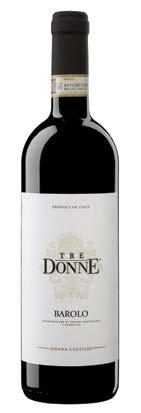
What sets the winemaking trio’s wine apart from the competition is an approach that focuses on passion, finesse, and attention to nature. Here are examples of their Piedmontese varietals that have earned praise and plaques, including when the wine was bottled at an average price.
Made with Nebbiolo grapes, this dark garnet-colored wine is aged in French oak for 36 months. It combines fruity and spicy tones with cherry notes and just enough tannins to come across as rich and solid. $43.
A subtle fizz embraces peach, apple, and nectarine notes with a refreshing, pleasant finish. An easy touch of 5.5% alcohol helps account for its reputation as a value. $10.


Aged three years in French oak, then two more years in smaller barriques, this edition exudes violet and bramble bush aromas with a whiff of earthy notes. The fruity flavor is alluring while hints of cranberry, mushrooms, and black tea complement the straw yellow color. $46.

FROM
It is an honor to have your trust to lead the Order Sons and Daughters of Italy in America (OSDIA) as your President during this crucial time in our Order.

OSDIA is the largest and oldest ItalianAmerican organization in the United States. Throughout our history, we literally donated tens of millions of dollars to support programs, from numerous charities and scholarships to disaster relief and veterans’ causes.
Our Commission for Social Justice (CSJ) ensures that we combat discrimination and promote the rightly positive image of all Italian Americans in the United States.
But what makes OSDIA different from other Italian American organizations, in addition to all of this?
Not only were we the first, and still the largest, organization, but we are also the only major Italian-American organization that has a grassroots component. I see this as the key ingredient that separates us from the rest, in so many prolific and powerful ways.
Why is “grassroots” important? In addition to promoting Italian-American causes, preserving our culture, and combating discrimination, so many of our Grand, Subordinate, and Local lodges are literally out in the community (i.e. boots on the ground), improving the standard of living for all Americans.
Whether it is to raise funds from a bake sale, gala event, or meatball contest, we use that money on a local level to do a variety of positive community projects. These projects include providing safety equipment to our first responders, donating to charities, helping feed those in need, to name a very few of the very real grassroots projects throughout our Order.
In a personal and real way, we get to meet one another at meetings, functions, and events. We get to see each other face to face, as we accomplish so many positive initiatives in the community. We are in action, each and every day!
To demonstrate our grassroots, I started a program entitled “This is US.” Our team of professionals at the National Office and I take the stories of our events and pictures of our amazing gatherings, and put together a promotion piece to showcase. In reality, we see who we are, from coast to coast, and in Italy and Canada. This is US!
The bottom line is that we are actively in the community making a difference in the lives of others in a very real and pragmatic way!
Put simply, from our National Office in Washington, D.C., to the local lodges around the world, we all share a common love of our culture and easing the pain of those in need.
There are so many reasons to join OSDIA, but I found one of the most daunting challenges is communication. I made it a priority to do three (3) things since taking office:
Let the world see who we are and what we do.
Sometimes I feel that we are the best kept secret. We need to change that. While we have over 90,000 Facebook follow-
ers, we made a concerted effort to engage on all social media platforms, such as Instagram, Twitter, YouTube, Pinterest, and LinkedIn. This is where the younger, potential members get their information.
We are now on TV, News 12+ with The Italian America Show. This is a TV station that reaches 3.8 million people in the New York metropolitan tri-state area, and the show streams every Sunday night at 8 p.m. EST throughout the world. This gives us tremendous visibility, and I thank all of our supporters/sponsors who advertise with us on that show! Our newest corporate sponsor is Cento. Their commercial that airs during the show is amazing!
Provide value in membership.
With so many groups to join, we made a concerted effort to improve member benefits, produce interesting contests, develop projects that are cutting edge, and provide a better way to engage all members. We want to provide tools for success while having a fun, engaging, and amazing interactive experience for our members.
Better communication throughout the entire organization.
Now, this part is a two-way street. We are actively engaging every Grand/Subordinate Lodge with regular meetings, launching surveys, and posting our events and programs on all of our social media platforms as well as providing email updates.
While I am extremely optimistic about our future, it will take a little effort, so please stay connected. In an age of “connection” with social media, this should not be an issue. It just takes a little effort.
If you want to see great interviews of famous Italian Americans, watch the Supreme Lodge events, view local lodge events that we air, enjoy “This is US” videos, and obtain topics of relevance to our organization, there is no better place than to view our YouTube channel. It is easy (and free) to subscribe. If you need help, reach out and we will be more than happy to help!
Please consider following us on our social media platforms: YouTube, Instagram, Twitter, Facebook, Pinterest, and LinkedIn—and don’t forget to like and share!
Our next major event is our National Education & Leadership Awards (NELA) Gala in Washington, D.C. on May 25. The Sons of Italy Foundation (SIF), headed by SIF President Joseph Sciame, is preparing an amazing event. This will be our first national, in-person event in over two years! We are excited to enjoy one another’s company and distribute thousands of dollars of scholarship funds to deserving students. However, there are limited seats, and tickets are selling quickly. For details, visit www.NelaGala.org. If you can’t attend, we appreciate any support with our advertising options.

We are so excited about what we accomplished thus far and are excited about moving forward with many amazing initiatives!
Like all things, nothing happens without an amazing team of individuals. Both at the National Office and those from our ranks that literally work every day to move the vision forward. They have made tremendous progress! Thank you!!!
I hope this finds you healthy and well.
Fraternally,

Brothers and Sisters of our Order Sons and Daughters of Italy in America (OSDIA) and friends—I bring you greetings from the Board of Trustees of our Sons of Italy Foundation. I use that word “our” as I am a firm believer in that, as OSDIA members, we are also members of the Foundation. In this spirit, we are the people who help support so many good works that we boast about. In recently celebrating two ethnic holidays and holy days—St. Patrick and St. Joseph—I have been thanking our God for being blessed to live in a country that provides us with the ability to help others.
We have this opportunity, once again, with our upcoming 33rd Annual National Education & Leadership Awards (NELA) Gala on Wednesday, May 25, 2022—which takes place in our nation’s capital, Washington, D.C. We are excited to have a sell-out audience at the Ronald Reagan Building and International Trade Center, just blocks from the Washington Monument.
Can you imagine our forebears—who helped found and support the foundation of OSDIA—seeing such fruits of their labors being displayed in a black-tie event? They came with little and gave us so much in addition to pride and heritage. They gave us culture. They gave us language. They gave us the ability to work hard—as they did—so that we could give to others today.
This year at NELA, we are giving another van to the Help Our Military Heroes (HOMH), awarding more than
$100,000 in scholarships to worthy students, and celebrating the achievements of some stellar Italian-American honorees: The Honorable Rosa DeLauro, Lidia Matticchio Bastianich, Angelo Vivolo, and Laurie Serricchio Hollander. We look forward to a memorable evening!
What amazes me is the sense of generosity and commitment that so many of our members—dear sisters and brothers—who, with their own obligations, come forward every year and support us. The next appeal will be related to supporting Ukraine, much as we have responded to so many such crises in the past 117 years.
We know that our sisters and brothers in Italy are welcoming many from Ukraine, and I have heard from the president of A Chance for Life (formerly the Boys and Girls Towns of Italy) with campuses in Rome and Civitavecchia, where they plan to welcome young Ukrainian boys and girls with their respective mothers who are without a home.

We can be a part of that cause! I urge you to respond with the same level of generosity that you have always shown. We are a good people—a great people—and there is no greater lesson learned from our Italian-American experience than to give back in order to improve the human condition.
Feel Italian-American pride and let us continue all our good work that we do as a TEAM. For there is no “I” in that word, but rather a synergy that makes us special as an Italian-American national organization and foundation.

The Grand Lodge of the Northwest is selling beautifully designed Italian Notecards. Each card is hand-drawn by one of our own members, artist Kathi Butorac. There are two options to choose from. All proceeds go to the National Charities of The Order Sons and Daughters of Italy in America. We would love your support!


To order a set of Italian Notecards, visit https://grandlodge-of-the-northwest.square.site/


 By Robert M. Ferrito, President
By Robert M. Ferrito, President

I’d like to start off with some good news, which came to us by way of Upstate New York. In Syracuse, Mayor Ben Walsh was planning to remove the Columbus Statue that was paid for and donated to the city in 1934 by Italian immigrants. In an ensuing court case, State Supreme Court Judge Gerard Neri ruled against Mayor Walsh, stating that he lacked the individual authority to legally remove the statue. The statue in Syracuse will stay!
While such victories feel seemingly few and far between, people are hearing our message. We continue to educate the public about why Christopher Columbus was an important symbol to the Italian-American community and the tragic reason Columbus Day came to be a federal holiday. It is important that we continue to fight through education
On this note, I am proud to say that we are making progress with our mission to permanently honor the 11 Italian immigrants who were lynched in New Orleans on March 14, 1891—the largest lynching in United States history and the reason Columbus Day became a federal holiday. You may remember that that three years ago, through the efforts of the New Grand Lodge- CSJ, the City of New Orleans and Mayor LaToya Cantrell issued an official proclamation apologizing for the tragedy.

I am proud to have been New York State President during this historic moment in time, and present at this ceremony, and I am proud that it was the first step in the
right direction. The next step was to launch a fundraising campaign for a memorial to be placed in New Orleans that would permanently recognize this tragic event and the 11 Italian immigrants who were victims on that horrific day: Antonio Bagnetto James Caruso

Loreto Comitz
Rocco Geraci Joseph Macheca Antonio Marchesi Pietro Monasterio Emmanuele Polizzi Frank Romero Antonio Scaffidi Charles Traina
We are now in the process of securing approval for a plaque to be placed at the very site of the lynching in New Orleans. The site will be placed on a historic walking tour for the city of New Orleans. I would like to thank my predecessor—CSJ Immediate Past President Kevin A. Caira—for initiating the fundraising effort that will contribute to this permanent memorial. The memorial will educate all who pass this exhibit about the brutal violence that the 11 Italian immigrants suffered—and in effect, the prejudice Italian immigrants as a whole endured.
I would also like to thank all who donated to this campaign when it was first launched three years ago. If you have not donated to this effort—it’s not too late! Please contribute using the form below and have a hand in recognizing the names of the men above.
It’s projects like these—ones that will live on long into the future—that we can all feel proud of accomplishing as we continue our fight to preserve Columbus Day and Columbus statues across the country.
Sempre Avanti!
Looking for a unique present for family or friends? Give the gift of Italian-American heritage with a oneyear subscription to Italian America magazine, the most widely read publication in the U.S. for people of Italian descent. We will contact your gift recipient to tell him/her of your present and also send them a complimentary copy of the most recent issue.
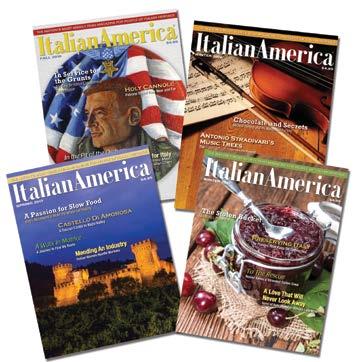
NAME: [Please print]
Address: City State Zip Code
Please say it is from:
NAME: [Please print]



Address: City State Zip Code E-Mail: Telephone: ( )
Is there a special occasion for the gift?
Send your check for $20.00 payable to Italian America Magazine to:
GIFT SUBSCRIPTION
Italian America Magazine 219 E Street NE Washington, DC 20002
I so enjoyed reading “The Son of His Father’s Songs” and “The Italians of Fisherman’s Wharf”—both excellent!! I also like “The Last Word.” Some stories bring back great memories. This is a wonderful Italian magazine with so many great things to read, recipes, books to buy, which I love.
Bonnie Nejeschleba Folsom, CaliforniaI just read the Winter 2022 edition. It is fabulous! You are doing a fine job with the magazine. I particularly liked “Quieter and Quieter.” It brought back many memories from my childhood! Thank you so very much.
Ron KaschakSusquehanna, Pennsylvania Binghamton Lodge #487
I very much enjoy Italian America, and I wish that it was more frequent.
Mr. Fisher’s “The Last Word” is always worthwhile, and his article about Jim Croce was extremely touching: he was a great talent, and his tragic death a great loss to us all.
Ron (Piccerillo) Little, Architect Emeritus (family name-change several years before I was born!) Oak Island, North Carolina
Corrections for Winter 2022 issue
“They Arrived With Horses” Feature Story (page 17) After the fall of the Ancient Greek and Roman Empires, the art of equitation was lost for nearly 1,000 years—not 2,000 years. The fall of the Roman Empire occurred in 476 AD.
Italian America Magazine is produced by the national headquarters of the Order Sons & Daughters of Italy in America®, 219 E Street NE, Washington, DC 20002. Tel: 202/547-2900. Email: nationaloffice@osia.org
Editor-in-Chief Miles Ryan Fisher Bookkeeper Michael Howard Managing Director Justin Smith
Italian America® is the official publication of the Order Sons & Daughters of Italy in America® (OSDIA), the largest and longest-established organization of American men and women of Italian heritage. Italian America provides timely information about OSDIA, while reporting on individuals, institutions, issues, and events of current or historical signi ficance in the Italian-American community nationwide.
Italian America (ISSN: 1089-5043, USPS: 015-735) is published quarterly in the winter, spring, summer and fall by OSDIA, 219 E Street NE, Washington, DC 20002. Periodicals postage paid at Washington, D.C., and at additional mailing offices. ©2022 Order Sons & Daughters of Italy in America. All rights reserved. Reproduction by any method without permission of the editor is prohibited. Statements of fact and opinion are the responsibility of the authors and do not necessarily imply an opinion on the part of the officers, employees, or members of OSDIA. Mention of a product or service in advertisements or text does not mean that it has been tested, approved or endorsed by OSDIA, the Commission for Social Justice, or the Sons of Italy Foundation. Italian America accepts query letters and letters to the editor. Please do not send unsolicited manuscripts. Italian America assumes no responsibility for unsolicited materials. Annual subscriptions are $20, which are included in dues for OSDIA members. Single copies are $4.95 each.OSDIA MEMBERS: Please send address changes to your local lodge. Do not contact the OSDIA National Office.

POSTMASTER: Send address changes to Italian America, 219 E Street NE, Washington, DC 20002. Subscriptions are available through the OSDIA National Office, 219 E Street, NE, Washington, DC 20002. OSDIA membership information is available at (800) 552-OSIA or at www.OSIA.org. Archives are maintained at the Immigration History Research Center, University of Minnesota, St. Paul, Minn. Printing by Printing Solutions Inc., Sterling, Va. To advertise: Contact ItalianAmerica@osia.org (202) 547-2900. Also see www.osia.org for advertising rates, specs, demographics, etc.
BY MILES RYAN FISHER EDITOR-IN-CHIEF, ITALIAN AMERICA MAGAZINE
Many years ago, when my sister was going through a difficult time in her life, she talked about it with our grandfather, who was always a great listener with an even-keeled perspective and a lifetime of first-generation experience. He offered her the following words: “It doesn’t get darker than midnight.”
One of my midnights occurred in high school on the varsity baseball field. After years of playing second base, earning my position on every school team, I encountered a coach who, for some unknown reason, berated me. Denigrated me. Pushed me to the point that I walked off the high school field, never to return.
I quit the team in early spring of my junior year and spent time after school continuing to take swings in my backyard, hitting my way through midnight. One day, a close friend of mine, Rob, mentioned that he planned to drive to a music store after school because he wanted to buy a guitar. I shrugged and told him I’d go for the ride. After all, spending time with a good friend was important, and so I rode with Rob to the music store, riding my way through midnight.
While Rob was checking out guitars, I roamed the store until a guitar caught my eye—a used black Epiphone SG. Uncharacteristically, I bought it on impulse and brought it home. Rob and I were going to learn guitar together, I decided. With him, I spent many hours learning guitar, playing my way through midnight.
I never stopped playing—guitar or baseball—through college or in all the years since I graduated. Then I first saw my future wife in Rome, as she stood on stage and sang pitch-perfect notes to Dolly Parton’s “Jolene.” Of course, at that moment I didn’t think at all about how my guitar could complement her—I simply wanted to meet her. When we met, midnight was quickly upon us, but we stayed together, sitting across from the Borghese Gardens until the sun began to rise.
As we got to know each other, we began playing songs—even writing our own songs—together. And once we started writing our own songs, we realized it was time for us to come up with a band name. So we thought and thought. And we ended up returning to that first night together, sitting across from the Borghese Gardens until the sun began to rise.
We decided to name our band Borghese Sunrise.
And now I smile, thinking about the words of my grandfather, the influence of my dear friend, and the first moment I laid eyes on my beautiful wife. Because of my midnight, I learned to do something—play guitar—that I never would have learned to do. And on the other side of that midnight was a sunrise. A Borghese Sunrise.

Tom Golisano is an entrepreneur, businessman, philanthropist, and author. In 1971, he founded Paychex, a company that provides payroll and human resources services to businesses. He was also the owner of the Buffalo Sabres of the National Hockey League and is credited with keeping them in Buffalo. Tom has created New York State’s Independence Party and has run for Governor of New York on three separate occasions. His philanthropic projects have included funding hospitals, university buildings, and the Special Olympics, to which he gave the greatest individual contribution that the organization has received.
Both sides of Tom’s family emigrated from Sicily. He was born and raised in Irondequoit, a suburb of Rochester, New York. He currently splits time between Upstate New York and Florida with his wife, former professional tennis star Monica Seles.
Tell us about your grandfather’s work in the sulfur mines of Sicily.
My father’s father was working in the sulfur mines near Caltanissetta, and he got killed in a mine cave-in several months before my father was born. So my father never knew his father. The work had a very high mortality rate, not only from accidents but also for health reasons. It was so hot in the sulfur mines that they didn’t even wear clothes when they worked.
In your memoir, it’s clear that you have extraordinary admiration for your older sister, Marie.What aspect of her character did you admire most?
When she was 15, she had her own catastrophe in which she lost her right hand. She’s 93 today, and you can hardly tell that she has a disability of any type, the way she handles it and the way she uses her prosthesis. She’s such an inspiration to everybody; she’s always upbeat. And most importantly, in my situation, when I really needed help from her financially, she was there for me. It wasn’t the best of circumstances. Not only did she have that accident, but she also had three children, and her husband had died of a heart attack at 41. She was a widow with three kids and $41,000 of insurance money in the bank. She said, “Take what you want.”
How much pride do you take in challenging the status quo and shaking up an industry, the way you did when you founded Paychex?

Initially, not that much. When I started Paychex, I did not have any idea that I was going to turn over an industry. I just thought there was a small market niche out there that everybody in the payroll processing business was ignoring at the time. So I looked at it as an opportunity to make a living. It took me four years to get to a point where I could feed my family. But it was not my goal to upturn an industry.
What is one lesson you’ve learned about the importance of telling the truth?
I’ll tell you one thing I did when I was kid. I got a call from a friend of mine one day who said there was this carnival going on at a Catholic school and they needed people to work the hot dog stand. And I said, “Well what’s exciting about that?” And he said that sometimes you don’t have to put the money in the till. He talked me into going over and working, and I fell victim to the pressure and put a few bucks in my pocket that I shouldn’t have. I lived with that for the longest time until seven or eight years ago when I sent a check to the school for $1,000. Having that in the back of my mind, I always found it best to be as honest as possible because if you aren’t, it usually comes back to haunt you.
The world knows how well your wife, Monica, swings a tennis racquet. But how well do you fare with one?
I have a confession to make. Monica and I used to play quite a bit, and we’d play singles. Of course, I would not have a chance against her if we did not adapt some new rules. Here were the rules: I could hit to the entire doubles court, and she could only hit to half the singles court. And that way I was able to be competitive.
Leave us with some words to live by.
I believe today, in our environment, there are new frontiers that there’s so much opportunity for people to have successful business lives. If I was a young person, the last thing I’d want to do today is get discouraged about business opportunities or ways to make a living. The opportunities out there are fantastic.


